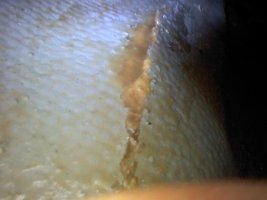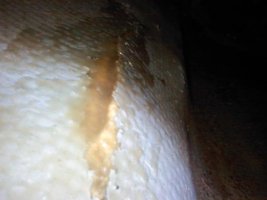A friend just bought a E29. A surveyor (post purchase!) noticed a crack in the glass on top of the keel, in the second (forward) access hatch. He had a theory that maybe some water got in and froze making the crack, but admitted he didn't have a clue. At his suggestion my friend filled it with some epoxy (apparently without glass or even thickener), so the shots are not very revealing. I'm wondering what the "water" would have been doing in there to allow it to "freeze" and expand! Anyone know, or have any other theories on what might have caused the crack? Should my friend be concerned? Don't know the history of the boat, but it's currently on the West Coast. I'm finding the freezing water theory hard to believe.
Attachments
Last edited:


